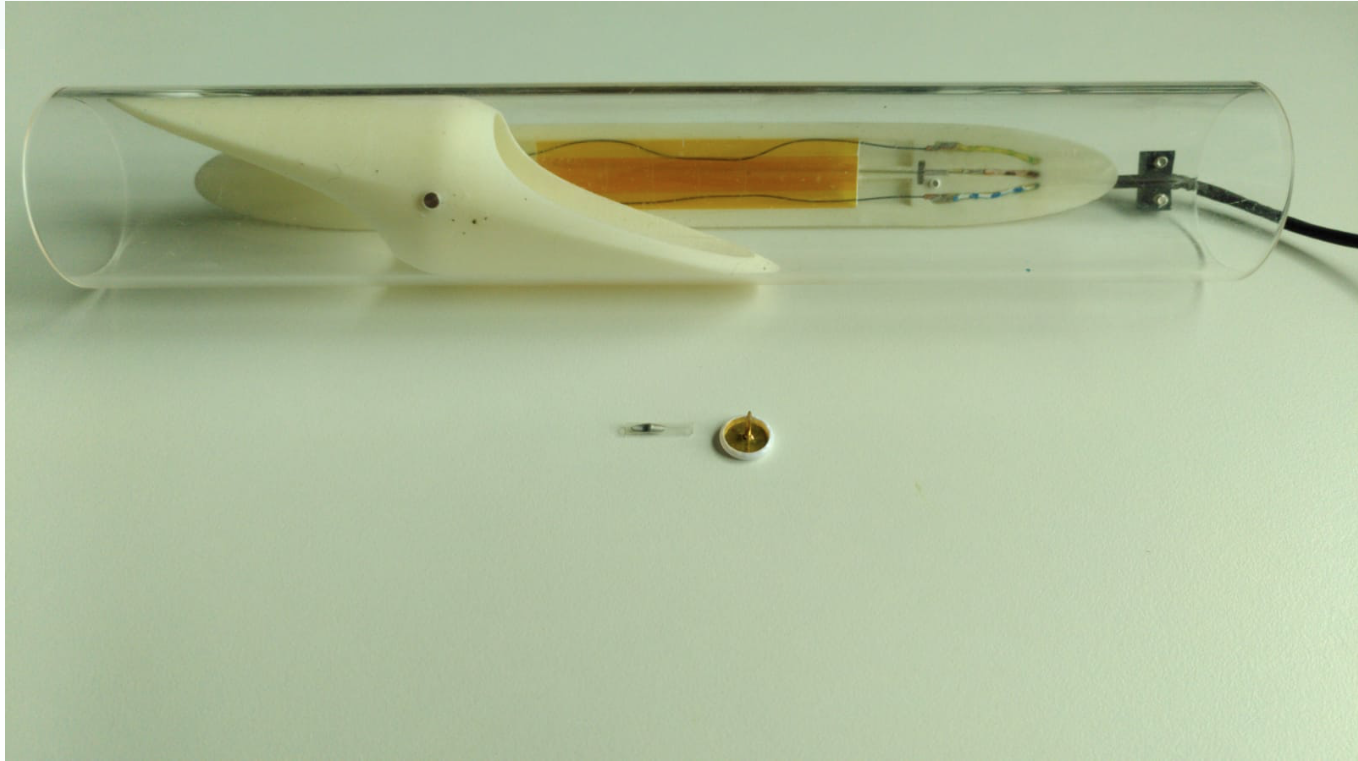
About Choice, every child desired
- Founders: Peter van de Graaf
- Founded in: 2015
- Employees: 4
- Money raised: € 1.25 million (six private investors, two Institutional: Rabobank and Brabants start-up fund)
- Ultimate goal: To make sure that no child is born undesired.
A valve inside a nickel-titanium implant the size of a dry grain of rice that is inserted into the fallopian tubes and can be opened and closed electronically to allow or stop sperm swimming upwards, which would then make it easy to regulate the fertility of a sexually active and fertile woman? That is the idea that entrepreneur and industrial designer Peter van de Graaf originally came up with about ten years ago. He started his own company Choice in an effort to achieve that idea.

In that case, a woman does not need to go on the (hormone-charged) pill or insert chemically active copper IUDs to avoid pregnancy. A major advantage, as both of those options have been known to cause all kinds of physical problems. Something you should not experience when using these valves if all goes according to plan.
The procedure in the outpatient clinic for inserting the valves takes about an hour and should be a one-off intervention. A physician with forceps and a catheter will proceed through the vagina into the uterus and from there, insert the implants with the valves into both fallopian tubes.
Valves open
If the valves need to be opened because the woman wants to conceive, a half-hour visit to a hospital clinic is all it takes. The physician just has to aim an antenna at the woman’s abdomen. This then sends energy to the motor that opens and closes the valve. Once the valve is opened, then everything is good to go. The valves are now open and sperm is able to pass through again and fertilize an egg that is ready. and waiting. This egg can subsequently attach itself to the uterine wall so that pregnancy becomes a reality and nature can do its work.
Van de Graaf came up with the plan for the sperm valves because he had reached a point in his life that made him think: “I want to leave something behind for the next generation because I have a daughter of my own too. I am pretty well-traveled and well-educated. All over the world, lots of children are born even though the parents never wanted them in the first place. That’s appalling. One in five children is born as a result of an unwanted pregnancy. That puts these children at a huge disadvantage and causes other problems, unlike children who were wanted when they were born.”
Countering climate change
This new contraceptive can help women to plan their pregnancies better, according to Van de Graaf. He does agree that men are quite capable of being responsible when it comes to contraception. “But if a man claims that he has been sterilized, as a woman, you can never be sure that he really has been.”
With valves in her fallopian tubes, at least the woman herself knows that she cannot become pregnant and is no longer has to depend on whether a man uses contraception. And the valve implants can also make a contribution towards combating climate change. “The world’s population is growing exponentially. If this growth rate were to slow down, emissions and production of certain harmful substances would also be lower.”
The question is when the product will be ready and available on the market. And if it does reach the market, aren’t there plenty of other new contraceptives around that might make it rather redundant? “I’m expecting to be able to do a trial at a test center in Munich – BSL Eurofins – this coming September. There, we are going to implant our valves in the fallopian tubes of rabbits first. Rabbits ovulate after having intercourse and then can have a litter of ten or more after a month or so. So this makes testing relatively easy.”
Trials on rabbits first
If that trial proves to be successful, the plan is to place the valves in the fallopian tubes of five or six women who are going to have their uterus removed six months later. After that, they will be examined to see how their bodies are responding to the implanted valves.
In the final phase, the product will have to undergo clinical trials involving several thousands of different types of women. By that time, Choice will need to collaborate with a larger company, Van de Graaf goes on to explain. “The costs of that will be prohibitive for us on our own. “
Once this process has been successfully concluded (which Van de Graaf expects to happen by 2025) the market potential for the valve implants ought to be huge. Over the past few decades, there has hardly been any innovation in the area of birth control. “There is a company that is currently developing a drug that increases mucus production in the uterus and is supposed to form a kind of clot that prevents sperm from swimming into the fallopian tubes. However, this entails drops that you have to take regularly.”
Bill Gates’s hormonal implant
Another form of contraception is also being developed by one of Bill Gate’s companies, says Van de Graaf. “This involves an implant that monitors a woman’s hormone production and releases hormones only when necessary as a way to prevent pregnancy. “But in that case, those women who use it will still have to deal with hormones that they are being given.”

